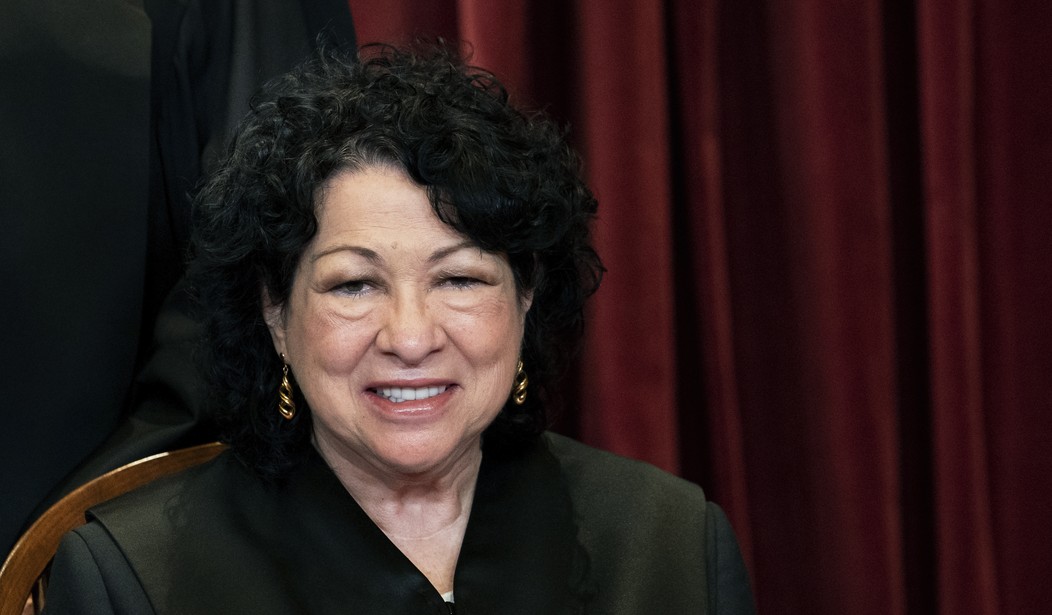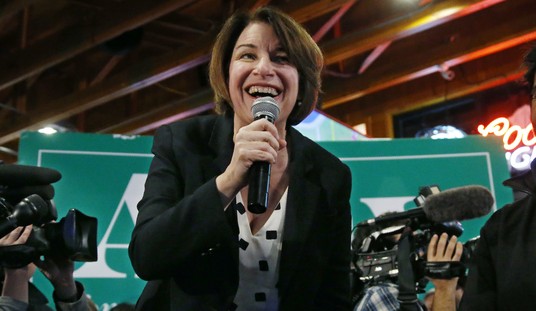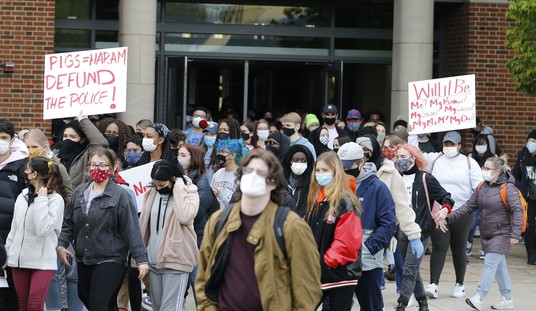As my RedState colleague Nick Arama so eloquently noted earlier, it’s painfully clear judging by his responses to Thursday’s affirmative action ruling that our supposedly fearless leader Joe Biden knows very little about how the Constitution and the Supreme Court are supposed to work, despite the fact that he is in possession of a law degree he purportedly earned from Syracuse University.
While not even his staunchest defenders would characterize Biden as a “great legal mind,” many on the left have made that claim about Supreme Court Justice Sonia Sotomayor, a claim that is highly suspect considering some of the statements she’s made during oral arguments in past cases as well as some of her dissents, as we previously documented here.
But even though I’m not a lawyer nor did I stay at a Holiday Inn Express last night, I do know BS when I see it, which is what happened upon reading some of Sotomayor’s dissent in the 303 Creative LLC vs. Elenis case, which saw the Supreme Court in a 6-3 ruling side with 303 Creative on religious freedom grounds after the business owner, Lorie Smith, preemptively “filed a lawsuit seeking an injunction to prevent the State [of Colorado] from forcing her to create websites celebrating marriages that defy her belief that marriage should be reserved to unions between one man and one woman.”
In her dissent in this case, Sotomayor in part wrote that “a social system of discrimination” has allegedly “created an environment” where the LGBTQ community does not feel safe and fears being victimized. As evidence of this, Sotomayor incredibly cited the murder of Matthew Shepard and the Pulse Nightclub mass shooting (begins on page 46):
A social system of discrimination created an environment in which LGBT people were unsafe. Who could forget the brutal murder of Matthew Shepard? Matthew was targeted by two men, tortured, tied to a buck fence, and left to die for who he was. See K. Drake, Gay Man Beaten, Burned and Left Tied to Fence, Casper Star-Tribune, Oct. 10, 1998, p.A1. Or the Pulse nightclub massacre, the second-deadliest mass shooting in U. S. history? See S. Stolberg, For Gays Across America, a Massacre Punctuates Fitful Gains, N. Y. Times, June 13, 2016, p. A1.
As many RedState readers will recall, however, some of the facts about the Matthew Shepard case were not as they were originally presented by the media nor LGBTQ rights activists at the time, as extensively documented by gay author Stephen Jimenez, who learned after over a decade of research along with interviews with over 100 people that Shepard’s death was likely drug-related and not a hate crime, and that one of his killers was reportedly also gay – and that they had had sexual relations:
Jimenez had no intention of causing such controversy. He’s an award-winning writer and TV producer, and visited Laramie shortly after the murder to gather material for a screenplay about the case. When he started he was convinced that Matthew died at the hands of homophobes, but he soon discovered that Matthew’s tragedy began long before the night he was killed.
Jimenez found that Matthew was addicted to and dealing crystal meth and had dabbled in heroin. He also took significant sexual risks and was being pimped alongside Aaron McKinney, one of his killers, with whom he’d had occasional sexual encounters. He was HIV positive at the time of his death.
And regarding the Pulse massacre, contra to Sotomayor’s claims, the club was not targeted because it was a gay nightclub. In reality, shooter Omar Mateen had pledged allegiance to the terrorist group ISIS, opposed U.S. actions towards Syria, and reportedly did not even know Pulse was a gay nightclub, picking it because it wasn’t well-guarded, as mass murderers often do.
I mean this stuff is out there in the public record, which you can find via a simple Google search. Unlike Sotomayor, I don’t have a staff full of people standing by and ready to do such things, but she does and she still got it wrong.
Relatedly, here’s Sotomayor criticizing her six colleagues in Thursday’s affirmative action ruling, referring to them as “unelected members of today’s majority”:
Help. I have been run over by the irony truck just by reading this sentence. pic.twitter.com/VbdPBtdEMQ
— Hooch (@CompanyHooch) June 29, 2023
Umm, has she looked in a mirror recently? If she’s not a fan of “unelected members” making decisions on behalf of the entire country, why is she even sitting on our nation’s highest court?
Boggles the mind.
Sotomayor’s befuddling dissents ended up earning her a very unflattering but fitting nickname courtesy of Twitter user “thefactualprep”:
justice sotomayor really is the senator mazie hirono of the supreme court
Though Justice Clarence Thomas might argue that distinction should go to Justice Ketanji Brown Jackson, I honestly think it’s a toss-up, knowing what we know about the laughable legal experience of Sen. Mazie Hirono (D-Hawaii).
Consider, for instance, these gems:
WATCH: Sen. Ted Cruz calls out Sen. Maize Hirono after she admits the Democrat opposition to originalism is purely results based.
Hirono cited cases including Roe v. Wade etc. pic.twitter.com/gN96XoBUHk
— Steve Guest (@SteveGuest) June 23, 2021
Sen. Mazie Hirono asks ACB "since you became a legal adult, have you ever made unwanted requests for sexual favors or committed any verbal or physical harassment or assault of a sexual nature?" pic.twitter.com/6JgLkoIXIF
— Daily Caller (@DailyCaller) October 13, 2020
I really don't know if Sen. Hirono knows what…the law means pic.twitter.com/Cwx6Dk06RH
— Liz Harrington (@realLizUSA) October 13, 2020
Then there was this classic, where Hirono says Jackson was “not about filling a quota” and then almost immediately afterward says “it is about time that we have a highly qualified, highly accomplished black woman” on the Supreme Court:
"They have implied you were solely nominated due to your race…Your nomination is not about filling a quota… It is about time that we have a highly qualified, highly accomplished Black woman serving on the Supreme Court," Sen. Hirono says of Judge Jackson in opening remarks. pic.twitter.com/5CsFDDheXY
— CBS News (@CBSNews) March 21, 2022
If these people are the future of so-called legal expertise in this country, we are screwed.
Related: NY Times Lets ‘Quiet Part’ Slip out in Telling Hot Take on SCOTUS Affirmative Action Ruling














Join the conversation as a VIP Member